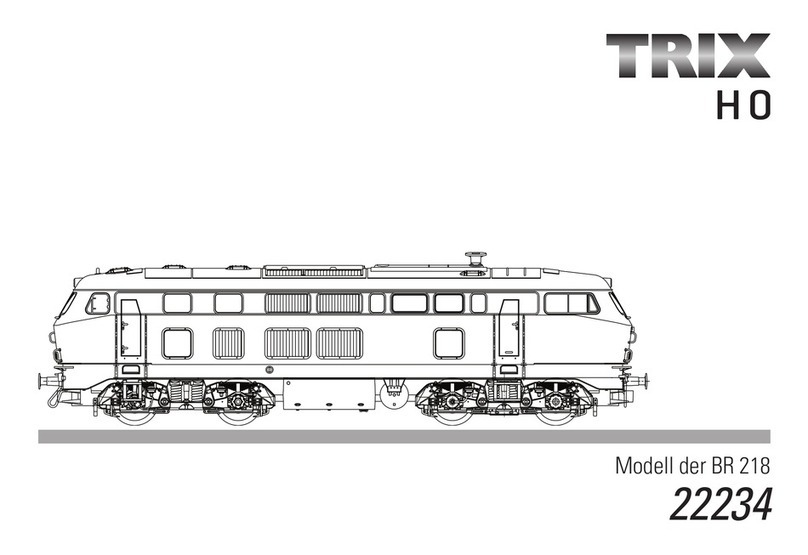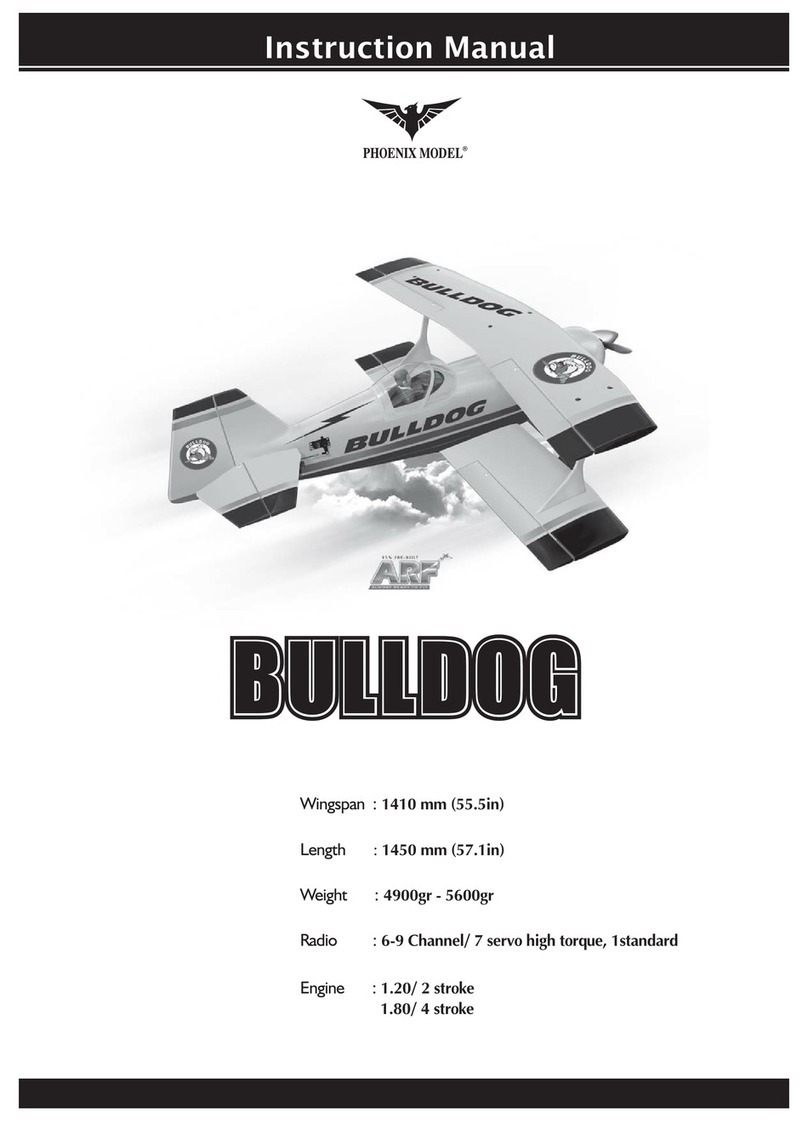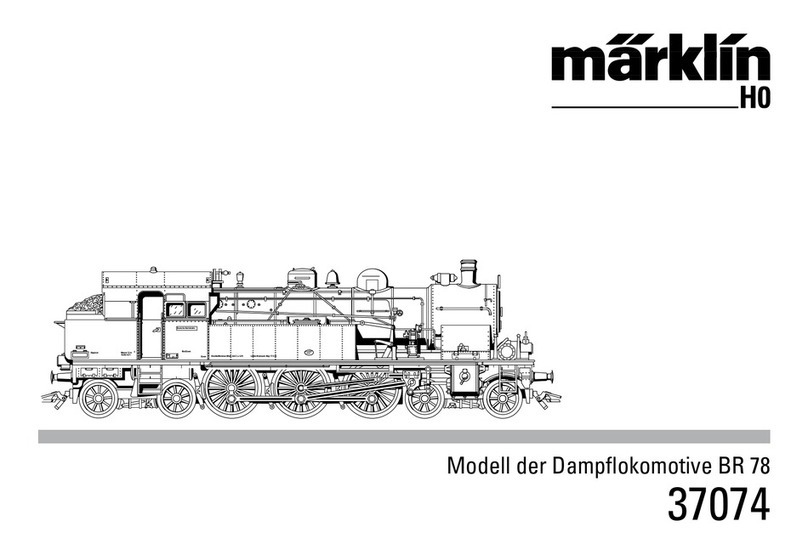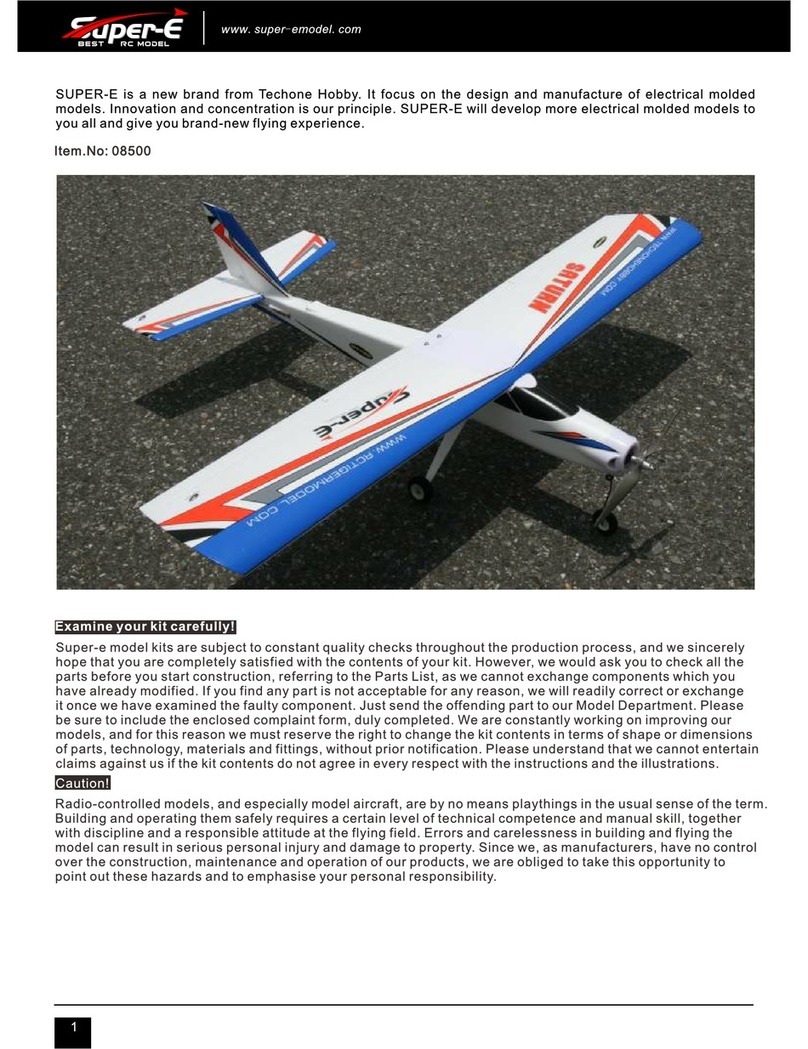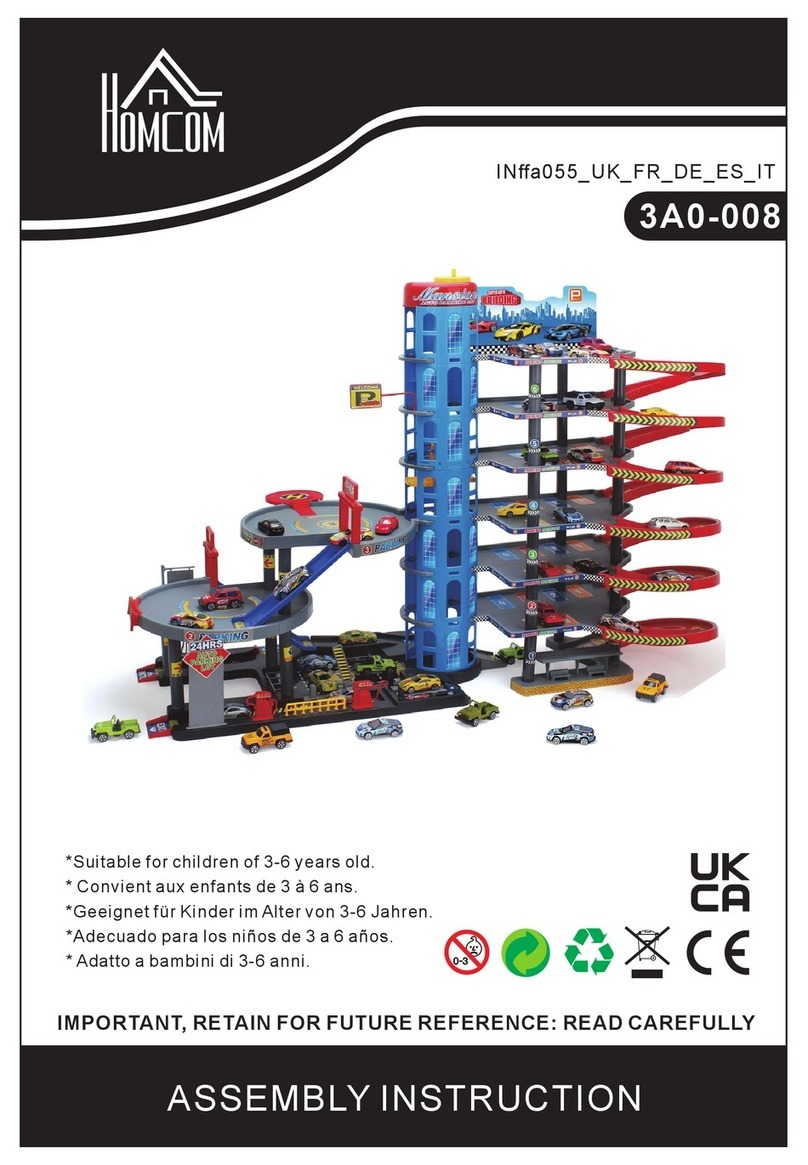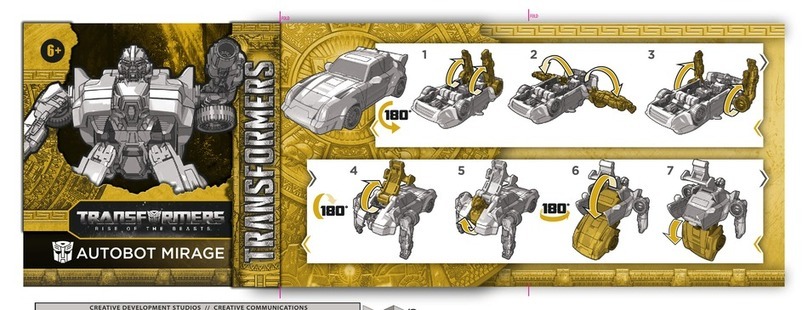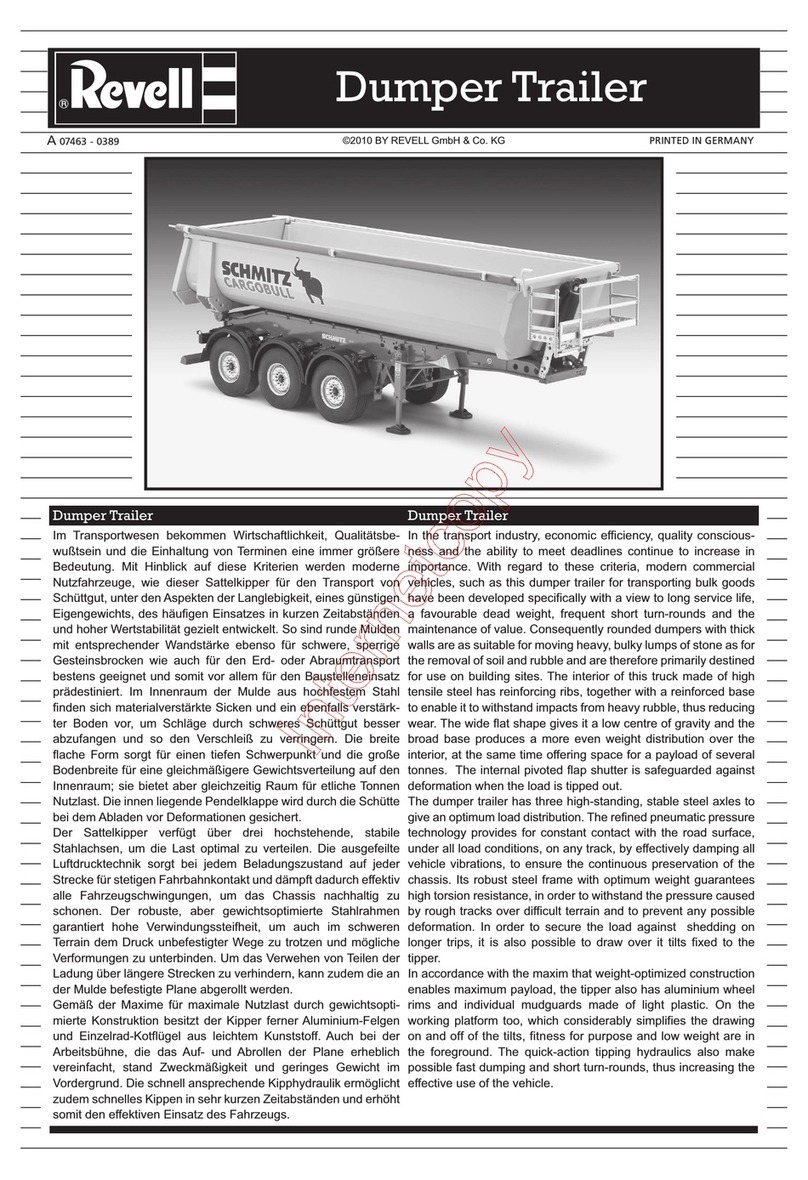Brassmasters EasiChas User manual

Brassmasters
Scale Models
www.brassmasters.co.uk
EasiChas
Chassis and Detailing Kit for
Hornby A3 Locomotive and Tender
For EM and P4 Gauges only
Instructions
PO Box 1137 Sutton Coldfield B76 1FU
Copyright Brassmasters 2011

Brassmasters Easichas A3 –Issue 1.1 September 2011
1 Introduction
1.1 The Easichas frames for the Hornby A3 locomotive, based on the original concept devised by John Brighton, have been
specifically designed to allow easy conversion to EM or P4 gauge, which results in a fully sprung locomotive and tender.
Furthermore, the basic conversion can be completed without the need to solder any of the main components together, although
a way has not been found to attach the valve gear return crank without soldering.
1.2 There are various levels of conversion with the builder choosing which, of any, additional detail required beyond the basic
conversion.
1.3 Basic level of conversion makes use of:
fold up mainframes and keep plate with sprung bearings
fold up replacement bogie (3 different types are provided for)
fold up trailing truck with springing
fold up replacement tender frame with sprung bearings.
1.4 Further components are provided to add to the detail of the conversion. These are, working from the front:
replacement front footsteps
overlays for the main frames in front of the cylinders with bogie wheel splashers, etc.
replacement bogie
German type smoke deflectors
replacement coupling rods
replacement return crank
return crank bearing cover
replacement reach rod and brackets
replacement brake hangers and blocks
brake hanger brackets
footplate support brackets
replacement damper operating linkage
replacement tender brake gear
replacement tender guard irons
1.6 Unfortunately, it is not possible to re-use the loco pickups on the basic conversion. However, as the Hornby loco is fitted
with tender pickups which can be adapted, this does not pose a problem. For more advanced modellers it is recommended that
pickups are fitted to the loco as well. A possible solution is shown in section 7.15
2 General Notes
2.1 There are three etches, two for the loco and one for the tender. Numbers shown in square brackets [ ] in the instructions
refer to the etch (L for the loco etch and T for the tender etch) and part numbers, e.g., [L2] is part 2 on the loco etch. The part
number appears on the separate etch diagrams. Certain parts, e.g. bolts, wire, springs, are not numbered.
2.2 Some of the parts are small and easily damaged, so do please take care. Parts should be removed from the sheets as
and when needed by use of a small scalpel etc., and the tabs and etch cusp removed with a small fine-cut file.
2.3 All folds and bends are made with the half-etched line on the inside unless otherwise stated.
2.4 On some parts it is necessary to emboss rivet / bolt heads from the reverse sides by use of a punch.
2.5 There are half etched test rivet holes on the back of the etch edging strip. Use these to get used to forming uniform rivets.
2.6 You should look at instruction 5.1 regarding pre-preparing the wheels before commencing building.
2.7 Notes on CD
We have included a CD-rom version of these Instructions. We have taken advantage of the medium to provide more detail than
we can include in traditional paper-based Instructions. In particular it has selected prototype photographs which are quick and
easy to view. We hope you will find this new way of presenting our instructions helpful when building your model, and welcome
your comments on it. It is an excellent way to familiarise yourself with the kit, particularly since the constructional photographs
can be reproduced to a much larger size than those included below.
To start
The CD is viewed using a standard Internet Explorer browser. Depending on which version of Windows you are running, when
you insert the CD into the drive it will open up to show a file titled “A3”. Double click this to reveal two files – double click the one
titled “Start” to run the CD.
If the disc does not automatically start and take you to the “A3” file, then open up Windows Explorer and locate the “A3” file that
way. Proceed as above.
Navigation –you can use the “BACK” button on your Internet browser and the menu on the left hand side of each page to
move around the guide. Click on any of the diagrams, photographs or etches to display it full size on the page. When you have
selected the picture or diagram you will see a small square in the bottom right hand corner –this is an expansion button and

Brassmasters EasiChas A3 –Issue 1.3 April 2020
allows you to “zoom in”. (If you can’t see the button at first move your mouse around this corner and the top left corner of the
picture until the button appears).
Installation
The Guide will operate directly from the CD, but if you will be able to access the pages and images more quickly if you copy the
material onto your hard disk. To do these simply copy the whole folder “A3” onto the C: drive of your PC and then open the Start
file from there instead of the CD.
We recommend you read the notes in the “Help” section before using the CD. If you have any difficulties please email us for
3 Dismantling the locomotive
3.1 Tools Required
A selection of cross head and normal miniature screwdrivers
Small pliers
Small plastic bags and labels to identify parts & screws when dismantling
Small files
A set of small reamers (useful but not essential)
Soldering iron (for electrical connections and return crank)
A steel rule
Back to Back wheel gauge
Plastic solvent, superglue and epoxy resin (24 hour & 5 minute)
3.2 The valve spindle guides fitted to the front and rear of the Hornby cylinders are very delicate and susceptible to being
damaged. It is advised that the cylinders are removed and put in a safe place whilst work is being carried out. Take care when
handling and working on the body.
3.3 Bag and label all small parts and source of screws as soon as removed (they are all different) - trust us on this one!
3.4 The chassis has a ‘tongue’ at the rear end and a screw at the front. To remove the body from the chassis undo the large
screw above the bogie. Push the chassis forward in the body to disengage the tongue and then withdraw the chassis leading end
first. Put the body to one side. Keep the screw for future use.
3.5 Remove the bogie and its bracket by undoing the screw at the back end of the bracket. Ease the bracket over the lug on
the back of the cylinder moulding. Keep the screw and plastic washer for future use.
3.6 Remove the DCC blanking plate and unscrew the lower plate thus allowing the removal of the chassis block upward
extension piece Unscrew the 2 screws from the cylinder saddle and motion bracket saddle. Keep the screws for future use.
3.7 Remove both crank pin screws from the centre axle and slide off the return cranks and connecting rods. The coupling
rods will now hang loose!
3.8 Remove the 3 screws on the keeper plates and gently remove the lower brake linkage keeper plate. Remove the
phosphor bronze pickup strips. Remove the upper keeper plate. Once free cut the wire where it joins the motor for the basic
conversion. If you are fitting new pickups to the loco, cut the wire where it joins the keeper plate and tuck out of the way in the
chassis for now. Keep the screws for future use.
3.9 Remove the wheel sets from the
chassis, unscrew the machine screws from the
remaining wheels and remover the coupling
rods. Put the screws back into the wheels for
safekeeping. The chassis should now look like
the photo. De-grease the chassis and remove
any insulation tape residue.
3.10 Hold the centre wheels and with a
twisting pulling motion pull off the wheels from
the axle (you will need to hold the axle with
small pliers to get the second wheel off). Also
slide off the brass bush.
3.11 Using a pair of pliers on one side of the gear wheel, gently slide the plastic gear down and off the axle by holding the
axle vertical and pressing down. It is very important not to damage this gear.
3.12 Using a normal screwdriver on the bottom and a spanner on the top, unscrew the bogie retaining nut from the bolt. Note
this is very tight. Push the bolt out of the bogie casting. Note that this is also a very tight fit. Once free put the bogie to one side
and re-assemble the screw and nut for use later.
3.13 Using a cross head screwdriver, unscrew the trailing wheel screw and remove the keep plate and wheelset. Keep the
screw and keep plate for future use.
3.14 You will now have a box of bits and an invalid Hornby guarantee!

Brassmasters EasiChas A3 –Issue 1.3 April 2020
4 Dismantling the tender
4.1 Remove the rear coupling from the housing by gently prising it off with a small screwdriver.
4.2 Remove the two screws on the bottom of the tender and remove the keeper plate. Keep the screws and keeper plate for
future use.
4.3 Remove all the wheelsets.
4.4 Remove the tender body fixing screw from the deep hole at the rear of the tender. Put the tender body and screw to one
side for safety.
4.5 Undo the two screws and remove the weight. Keep the weight and screws for future use.
4.6 Unsolder or cut the wires off the phosphor bronze pickup strips. Carefully pull the pickup strips out of the body. Put to
one side for future use.
4.7 Your loco and tender are now ready for conversion.
4.8 Wash your hands as you will have grease on them from stripping the chassis and the etches should be kept as clean as
possible.
5 Basic loco conversion
5.1 If you are using Alan Gibson wheels the following will prevent
problems with lose crankpins. Countersink the rear of the crankpin
screw holes using a 3mm drill and half screw the M1 (14BA) screws
home. Using 24 hour epoxy smear the remaining thread and screw the
14BA screws home. Smear a little epoxy over the head for additional
security but there should not be a big blob that will catch on wheel
rotation. Leave in a warm place for 24 hours to set. This will retain the
screws and stop them from rotating. See photo (before the epoxy was
applied).
Prototype Frames - There were major problems with frames cracking almost from new. This resulted in a series of evolving
solutions as described below:
First 62 (pre 1930 build) started with 4 oval holes per side.
In May 1929 No 4471 had strengthening patches between middle and rear coupled axles obscuring the holes, 2545
4470/4/5/7/81 also fitted in next 3 years.
New Build from 1930 all had round holes 12" diameter (2595/6/7, 2795/6/7/8/9)
From 1931 onwards stiffening plates were added for several locos around leading hornguide obscuring front holes completely
and partially obscuring leading axle rear holes.
From Oct 1931 6 new frames were produced and fitted as replacements, it is assumed following the new build rules of round
holes.
From April 1932 frames were cut in front of rear coupled axles and new 3/4 front portion butt-welded on with a cover plate
behind. From thereon spares were produced and frames were swapped. These repaired frames had 1ft round holes, the front
hole in the cover plate matched the hole in the 3/4 frame, which we believe was built to the round hole rule above, the other
hole lining up with the larger hole in the rear end. Here again it is assumed that this hole in the cover plate would simply match
the new build.
From October 1933, when half the Pacifics had had new or 3/4 new frames fitted it was decided to do away with the lightening
holes completely (except those in front of the cylinders). The last nine built (2500-8) were built without lightening holes.
By 1938 all the original GNR locos (class A1) and most of the 1928-30 built A3s frames been corrected in some way. However
replacement frames continued to be fitted and swapped right up to 1962 so the situation regarding exact locos is confusing or
unknown unless you have a clear photo with the frames well lit.
The nickel silver kit frames have half etched lines on the rear for early oval lightening holes and later circular holes. These
should be drilled out and opened up with a piercing saw to suit your prototype. Photos showing the patching during post war
overhaul show these patches and repairs to be quite crude and 'heavy engineering' - and of course covered in lots of oil and
crud!
5.2 Remove the section from the front of the loco mainframes [L1] and put the bogie top plate [L8] in a safe place for later
use. Clean up the residual tabs with a small file

Brassmasters EasiChas A3 –Issue 1.3 April 2020
Place the frames flat on the bench and with a thin metal rule
fold to produce a ‘U’ section. Either again using a ruler or using
a strong pair of pliers, fold up the small sections along the edge
of the main frames at 90 degrees. See Photo (A late version
with no lightening holes).
5.3 Ensure the mainframes fit over the original Hornby
chassis. Note that they will need to be eased over the locating
dowel (open the hole out slightly with a round file but ensure it
remains a good fit but the mainframes sit down fully), on the
bottom of the Hornby chassis. See Photo below. Remove the
mainframes.
5.4 Check the fit of the brass bearings into the slots in the mainframes. If
tight, using a smooth sharp file, lightly file away the cusp equally on both of the
edges of the slots until the bearing slides up and down with no binding. It is
very important that too much metal is not removed resulting in a sloppy fit –no
side play whatsoever is the aim, just a smooth sliding fit.
5.5 Emboss the rivets on the locomotive keep plate [L2], 3
around the edge of the front dummy bearing in front of the leading axle. (The
indents in the centre of the front dummy bearing and in the centre of the cross
shaft bearing (just in front of the dummy bearing) are centre marks if the builder
wants to put in the cross shafts).
5.6 Fold up both sides at 90 degrees and fold up the ‘cups’
that will hold the Hornby plastic brake hangers so that they
form a flat bottom gentle ‘V’ shape (rather than a parallel-sided
‘U’ shape). See Photo.
IMPORTANT - Carefully examine the bearings as they are not
symmetrical. It can be seen that the flange on one side of the
slot is wider than the other side. For EM gauge the bearings
need to be mounted in the frames with the thicker flange
towards the centre of the frames. For P4 gauge the bearings
need to be mounted with the thinner flange towards the centre
of the frames. Increased side-play on the drivers can be
obtained by having the thin side of the bearings on the outside or rubbing off the circular beading round the axle hole. For EM
gauge, it will also be necessary to file off the raised section on the Hornby chassis around the front axle slot and the similar raised
rim on the inside face of the bearings to ensure the bearings move up and down freely.
5.7 Fit the mainframes to the Hornby chassis, place
the bearings in the slots and check for easy movement.
See Photo
5.8 Temporarily fit the keep plate, using the original
Hornby screws and lower keeper plate. Ensure the
bearings slide to the bottom of each slot in the keep
plate.
5.9 Carefully cut the brake gear off the two Hornby keeper plates by
sawing next to the main part of the centre solid section. Once the saw cut is started
hold the brake block (not the bigger keeper plate) or they will ping off across the
room! See photo. Keep safely for later use. Then remove the springs from the
lower keeper plate again cutting with a saw.
5.10 Take the new 3mm axles and test fit them, firstly in the
axleboxes (if tight ream them out to 3mm using a reamer or, if
you do not have one, a small round file, a precision drill or a
broach), then place each through the axleboxes and through
the “slots” in the Hornby chassis block. If tight gently file the
slots in the Hornby chassis to allow the axle to move freely. The
most likely problem will be the front edge of the leading axle and
the trailing axle. If any filing is to take place on the rear chassis
axle, then cover the holes in the side of the motor with sellotape
to stop mazak filings getting into the motor. Do not make the
slots deeper (just wider as required) as the system is designed
to ‘bottom out’ on the Hornby chassis block. See Photo.

Brassmasters EasiChas A3 –Issue 1.3 April 2020
5.11 Mount the Hornby worm wheel onto the new axle by gentle
pushing the gearwheel into the worm wheel, carefully ensuring that the
worm wheel is offset on the axle. If it is a loose fit, a simple pop mark on the
axle will grab the worm wheel. See photo.
5.12 Mount the bearings on all axles the correct way round, then any
spacing washers required (there will be about 0.7mm lateral movement of
an axle with no washers in 18.83 gauge –so not many washers are required,
There is not much clearance behind the slidebar/connecting rod forthe front
axle. For 18.83mm gauge we suggest one full washer each side of the
leading axle (none for EM), none on the centre axle and none on the trailing
axle) and finally mount the wheels on the axles. Quarter the wheels with the
right hand wheel leading the left hand wheel by 90 degrees (a three cylinder
loco should be 120 but can cause problems on a model).
5.13 Place the bearing springs over the tongues on the
frames, fit the wheelsets into the main frames and attach the keep
plate. See Photo. Check that the motor turns the centre wheelset
with no sign of any binding.
5.14 Re-assemble the Hornby coupling rods onto
the crankpins using the 8 special bushes provided.
These have to be soldered or glued with epoxy
centrally in place (sometimes they are slightly loose in
the rods and if so need careful ‘central’ positioning to
maintain the correct wheelbase) and if needed
reamed out to take the Gibson crankpin bushes (as
fitted on the right hand boss below) (See photo).
A finer scale solution is to solder up a new set of coupling rods, but this of course takes longer (see section 7.8).
Fit the rods and temporarily secure with a piece of electrical wire
sleeve (does not come unscrewed unlike a proper 14BA nut!).
The rod with the simulated joint (as Photo) is the trailing rod on
both sides. The trailing rod sits (un-prototypically) on top of the
leading rod on the middle crankpin. Check that all the wheels
now turn without binding when power is applied to the motor.
See photo.
5.15 Now comes the scariest job on the conversion! The
Hornby splashers have insufficient clearance between their inner
faces for EM or P4 18.83 wheels. However all is not lost as the
splashers are actually made from quite thick plastic and their
vertical faces can be thinned to allow sufficient clearance. Details of available space are as follows;
Hornby A3 as supplied –distance between the splashers leading 21.54mm, centre 21.97, trailing 21.93mm.
Splasher thickness (each side) - leading 0.8mm, centre & trailing 0.71mm.
Gibson P4 wheels need 21.95mm plus any sideplay as desired. Therefore by reducing the thickness of the plastic splasher,
clearance of around 22.7mm (or .75mm between each wheel and the splasher) should be achievable.
Although this sounds difficult, I have had no trouble thinning the splashers on all the models I have converted. The process
I use is to hold the body firmly and with a burr cutter in a mini drill, gently remove a little plastic and regularly do a ‘candle
test’ by holding it up to a strong light –if the plastic is getting too thin you will be able to see light through and therefore
STOP! If this is done a little at a time there should be no problems. If you are more cautious then the same job can be done
with scrapers and files –just keep doing the candle test!
Alternatively, etched replacement splasher fronts are provided. See section 7.14

Brassmasters EasiChas A3 –Issue 1.3 April 2020
The completed models have been run at speed through B6 turnouts with side play in the centre and rear driving axles without and
problems nor replacements of the splashers.
Bogie
5.16 The bogie is intended to be built as compensated with a spring between bogie and chassis.
Prototype Bogie - Prior to WW2 the bogies were fitted with twin dust guards on the front of the bogie [L4]. When BR AWS
was fitted to the locos in the mid to late 50s, the front of the bogie was rebuilt with a different cross member and no dust
guards [L5]. However, check a prototype photo of your particular loco.
Chose the front bogie spacer for the bogie type required and remove the cusp in the holes for the bogie wheel axles on the bogie
side frame [L3], front bogie spacer [L4] or [L5] and rear bogie spacer [L6]. The axle holes should allow the axle to slide or rotate
freely without any slop. Check the holes in [L3], [L4], [L5], [L6], [L7] and [L8] for clearance for 16BA bolts.
5.17 The prototype bogie sideframes were assembledto the stretcher bycountersunk rivets. These sometimes were not flush.
If required, push through lightly the half etched rivets on the bogie sideframes [L3].
5.18 Fold up the bogie sideframes [L3] See photo
5.19 Select the bogie front spacer for your period. For the locos from
build up to the fitting of BR AWS use [L4]. For the later period with BR AWS
fitted use [L5]
5.20 It is necessary to lightly score the half-etch section of the front bogie
spacer [L4] to ensure that the fold lines are in the correct place on the two
dust guards. Where the etch needs to be scored is indicated by a nib on the
outside edge of the etch. The score line should be made with a scriber or tip
of a scalpel or craft knife across the back of the dust guards. Once the etch
is scored, file off the nibs flush with the edge.
5.21 For both versions [L4 or L5] fold the two main bends on the front spacer, fold up the front axle bearings and the guard
irons. Ensure that every angle is 90 degrees.

Brassmasters EasiChas A3 –Issue 1.3 April 2020
For [L4] fold down the dust guards along the half etch line until
the dust guard touches the front edge of the lifeguard. Fold the
dust guards up along the edge of the half etched section. The
spacer should now look like the Photo.
Place the spacer in the bogie side frames [L3] and bend the
dust guards back along the scored line so that it rests against
the front edge of the sideframe (see Diagram 1).
Diagram 1 –Bends for dust guards
For [L5] bend up the front section along the half etched line by the lifeguards. Ensure that it is at 90 degrees. (see Diagram 1 and
Photo).
5.22 Fold the rear spacer [L6]. Ensure that every angle is 90
degrees. See Photo.
5.23 Remove and clean up the half etch retaining tabs from
the rectangular bogie spacer [L7], followed by the top plate [L8].
All the bogie components are shown in the Photo below.
5.24 Fit the rear spacer
and then the front spacer into the
sideframes. These should be a
fairly tight fit, but shouldn’t force
the sides of the sideframes
outwards. Ensure that the axle
holes in both etches line up. Any
slight discrepancy can be
corrected by tweaking one or
more of the bends.
Complete the assembly of the
bogie by adding the rectangular
bogie spacer [L7], followed by
the top plate [L8]. Ensure the countersunk holes for the 16BA bolts are to the top and that the tail of the top plate engages into
the small slot in the rear plate of the main spacer. Pass the screws through the mounting holes from the top. An etched spanner
[L9] is provided which needs bending at 90 degrees along the etch line, to hold the nut whilst the screw is tightened with a
screwdriver. For clarity the order of the etches from the bottom of the bogie is; 1. bogie side frame, 2. rear bogie spacer, 3. front
bogie spacer, 4. rectangular bogie spacer, 5. bogie top plate. Check that the holes/slots align perfectly by placing an axle through
the holes, it should rotate easily. Adjust 90 degree folds (or enlarge inner holes/slots) as necessary.
L4
L5

Brassmasters EasiChas A3 –Issue 1.3 April 2020
See Photos of the completed
bogie. Note the dust guards
have not been bent to finished
shape.
5.25 Fit the wheels to the bogie using sufficient spacing washers to ensure there
is no sideplay.
5.26 Bend the guard irons to shape if necessary shortening them slightly. See
photo (note the dust guards are removed from this bogie).
5.27 Bend the bogie mounting bracket [L10], matching as
closely as possible the Hornby original bending the
central tab back on itself. See Photo (the central tab is under
the bracket).
5.28 Re- assemble the bogie to the mounting bracket
using the original screw and nut, placing the two thick [L11] and
one thin washers [L12] on the screw first before inserting in the
bottom of the bogie. Use the new spring provided with an
etched washer [L13] between the top of the spring and the
underside of the bogie mounting bracket and another washer
[L13] between the top of the bracket and the nut. See Photo.
5.29 Re-fit the Hornby cylinders by unscrewing the new
chassis/keeper-plate allowing the front of the frames to be lowered so the
cylinders slide back in place. Secure cylinders with the original screw and re-
fasten the new chassis/keeper plate in place. Fit the new bogie to the chassis
using the original Hornby screw (if you did not label it this has a plastic washer
attached), note that there is a tongue on the rear of the cylinder support that
goes through the new bogie mounting bracket. See Photo.
5.30 Fold up the trailing wheelset bracket [L14] and bend out the four small ears on
each side of frames at 90 degrees.
5.31 Cut two pieces of the thicker (10 thou) spring wire to a length of23mmand bend
over the last 3mm at 90 degrees. Insert into the holes in the ears in the trailing wheelset
bracket so that the bend is away from the axle. See photo. Cut the Hornby trailing
wheelset retaining plate in half (as shown in Photo) to form a spacer (discard the
piece without a hole).

Brassmasters EasiChas A3 –Issue 1.3 April 2020
5.32 Remove the 3 plastic ribs from inside each side of the Hornby
Cartazzi truck with a craft knife –the plastic is quite brittle. Fit the new
trailing wheelset into the Hornby chassis block by placing the axle in the
trailing wheelset bracket between the plate and the springs, putting the
spacer in the recess in the Hornby chassis, and then putting the bracket
and wheelset on top of the spacer with the axle in the chassis slot. Use
the original Hornby screw to retain in place. See Photo.
5.33 Re-fit the Hornby chassis extension block above the cylinders
using the original countersunk screw. As it is not possible to re-use the
loco pickups, test run the chassis at this stage using jumper wires. You
may prefer to convert the tender at this stage to provide electrical power.
5.34 If it is intended to run the loco round tight curves on a loco where the chassis/frames are live, then it may be necessary
to remove the front leg of the leading brake hanger attachment point on each side of the sideframes together with the front sanding
pipes. This is easy to do once the model is completed so a decision does not need to be made at this stage.
5.35 Clean up the cut line on the plastic brake hangers to ensure there are no raised edges and if necessary shorten the
hanger back ‘studs’ (that fit in the ‘cups’) so they line up with the wheel treads. Remember the chassis is sprung and the wheels
will move upwards under the loco weight. The brake with sanding gear pipe attached goes on the leading axle with the gear
pointing towards the centre driver. It will be
necessary to cut a slot in the leading cups
to clear the sanding gear pipe. Attach the
brake hangers to the brake hanger
attachment points using cyanoacrylate glue
or epoxy resin.
5.36 Take the brake pull rod etch [L15]
and twist the front section through 90
degrees so the adjusters are visible from
the side (refer to the Hornby plastic pull
rods), clip it into the holes in the bottom of
the brake hangers. See Photo.
Diagram 2 –Return Crank Assembly
Crankpin
Coupling rod
Gibson long
crankpin bush
Hornby connecting
rod
Crankpin nut
Bush in connecting rod
A. Solder return crank to
crankpin nut
Wheel
Rivet
Return crank
B. Crankpin and nut screwed
on so that crankpin bottoms
out against return crank
C. Gap left between
nut and bush

Brassmasters EasiChas A3 –Issue 1.3 April 2020
5.37 Diagram 2 shows the new arrangement for the return crank and photo above the completed valve gear (with Hornby
Rods). Remove return crank from the Hornby valve gear by drilling out the rivet attaching it from behind; be careful not to damage
the hole in the valve gear as a new rivet will have to go through this.
5.38 Form the new return crank by soldering the return crank front [L16] to the return crank rear
[L17]. Solder the return crank assembly to a crank pin nut. See rather cruel photo!
5.39 Screw the return crank onto the centre crankpin. Adjust the length of the crankpin so the
return crank sits at the same angle as the original Hornby one or refer to the website www.rail-
online.co.uk for a perfect side on photo of 60080 showing the positioning.
5.40 When satisfied with the angle when fully tightened, attach the other end of the return crank to the Hornby
valve gear by a rivet inserted through the valve gear from the front. The rivet can be attached by squeezing with
pliers firmly so the back expands. An alternative is to oil the moving link and carefully solder the rivet to the rear of
the return crank working quickly with a very hot iron.
5.41 Replace the cylinders and valve gear onto the chassis. Unlike the similar Hornby A4 there is sufficient clearance for the
front crankpin to be fitted in the normal way as long as the ‘nut’ is thinned down slightly to give adequate clearance for the
connecting rod. Fit the remaining crankpin nuts. Check the valve gear runs freely under power.
5.42 Attach the driving wheel balance weights [L18] and the coupled wheel balance weights [L19] to the wheels, using
photographs to ensure the correct position (they are missing from the photo below!).
5.43 Cut a large piece of lead and attach inside front end of the loco body. This is necessary because the Hornby chassis is
heavier towards the rear and does not sit level on the new sprung chassis.
5.44Re-fit the loco body. The basic loco conversion is now complete.
6 Basic tender conversion

Brassmasters EasiChas A3 –Issue 1.3 April 2020
6.1 Taking the tender frames [T1] and [T2], fold the four cross pieces
to 90 degrees. Fold the outer half of the slotted axle bearing sections
through 180 degrees back on themselves. Note: the etched line is on
the outside of the bend. To ensure a tight bend, squeeze the two
halves together using a pair of pliers. (see Photo taken at a slightly
later stage)
6.2 Open up the slots in the tender frames [T1] and [T2] so that the
tender axles slide freely without any slop.
6.3 Bend out the five small ears on each side of frames at 90 degrees.
6.4 Cut off the 16 plastic wheel guides form the bottom of the Hornby tender.
6.5 Ensure that the new frames fit into the Hornby tender, fitting the right hand side frame first
(looking from above –this is the frame that slides under the metal plate at the front of the tender)
. Secure in place using the original Hornby screw in the front hole. Drill a 1.5mm hole in the plastic
tender underframe in line with the rear fixing hole and fit a new screw in the hole. Remove screws
and tender frames.
6.6 Fold up the 8 axleboxes [T3]. This is best done by placing the etch with the half etched middle
section perpendicular to the edge of a rule, or similar, to form a ‘T’ shape. Push down on each
end of the etch so that it begins to wrap over each side of the rule. See photo.
Remove from the edge of the rule and push together between the fingers. Complete the bend by
squeezing the two edges furthest from the bend with a pair of pliers. The holes in the two halves
of the folded section should be in line. Open out the holes so that the axles rotate freely with a
very slight amount of slop.
6.7 Assemble the rear tender wheelset through the
tender frames by firstly fitting a bearing, then fitting the axle
through the frame, then fitting the second bearing, and finally
the second wheel. Sufficient washers also need to be fitted
between the wheel and the bearing to ensure there is
minimum sideplay. For guidance for P4 two full width
washers per side is recommended on outer axles. For EM a
single washer is sufficient. Put a 3mm right angle bend in the
end and then slide the thin 8 thou steel spring wire through
the hole in the axleboxes and then through the retaining ears
(this is a bit of a fiddle!). See Photo.
6.8 Feed the other 6 axleboxes onto the steel wire
at the appropriate positions. See Photo.
6.9 Assemble the leading wheelset with similar
washers. Assemble the two inner wheelsets in the same
way but without the spacing washers and fit all wheels
checking for the correct back to back.
A tip to check the first wheel fitted is running true is to balance them
on a steel rule holding the axle with a file and move to left and right
spinning the wheels, and wobble can be corrected by ‘twisting’ the
wheel with finger pressure and then re-checking. See Photo.
6.10 Fit the frames to the Hornby tender,
and refit the cast weight andtender top. Ensure that
the tender runs smoothly and that all the axleboxes
are free to move up and down. See Photo,
6.11 Bend the Hornby phosphor bronze
pickups flat.

Brassmasters EasiChas A3 –Issue 1.3 April 2020
Diagram 3 –Tender pickup retaining blocks
6.12 Remove the Hornby tender top and
cast weight. Cut the bigger strip of plastic into 4 x 9
mm lengths. Cut the smaller strip of plastic into 4 x
3 mm lengths Glue the smaller pieces of the plastic
strip onto the larger pieces of plastic strip at one end
(see Diagram 3). Fit the four assemblies as shown
in Photo equidistant between the out wheel opening
and the inner wheel opening ensuring the resultant
slot is towards the centre line of the tender. (Photo
shows a non-corridor tender with the assemblies
butted up against plastic pips. On the corridor
tender plastic underframe there are no protruding pips)
6.13 Curve the two outer pickups of each pickup strip downwards and then slide the strip into the slot under plastic strip. The
inner two pickups rest on the plastic frame. Adjust the curvature until the outer pickups just rests on the top of the wheels. Repeat
for the other strip. See Photo.
6.14 Reconnect the pickup wires to the pickups, at this point it might be a good idea to check electrical conductivity through
the rivet to the vertical draw-pin at the front of the tender –it has caused an intermittent fault on at least one loco!
6.15 Connect the tender to the loco and ensure that the loco moves under its own power. If there are any problems first check
the pickups, but the most likely cause of the problem is the two phosphor bronze springs on the loco coupling that press on either
side of the tender pin and the two phosphor bronze springs that stand up on the loco coupling. For the former ensure there is
adequate pressure on each the side of the pin. For the latter make sure that the springs are touching the plate on the underside
of the tender and are not touching the plastic ring than surrounds the base of the pin.
6.16 Glue two smaller pieces of lead into the underside of the tender body, each side of the coal slope as far forwards as
possible. This ensures that the tender springing works correctly and the tender sits at the correct height.
6.17 Re-assemble the tender
6.18 The tender brake gear can be replaced either utilising
the original plastic brake hangers or fitting with new metal
brake hangers. For metal brake hangerssee section 8.1. Again
remember the plastic ones will not cause electrical shorts!
6.19 Cut off the tube section at the back of the Hornby
keeper plate flush with the plate.
6.20 Divide the Hornby keeper plate into sections by
sawing across the plate immediately in front of the first brake
hangers, immediately behind the second brake hangers and
immediately in front of the third brake hangers. Discard the
sections without brake hangers cut the remaining two pieces
roughly along the centre line. Clean up the cut edges. See
photo with the original brake keeper plate above the chopped
up version.
6.21 If the brake gear is glued to the chassis then it would not be possible to take the chassis apart so a removable version is
suggested. Place one of the brake gear clamping plates [T4], with the larger cutouts towards the front, on the underside of the
tender immediately behind and touching the leading frame spacer. Drill a 1.5mm hole in the plastic tender underframe through
the hole in the plate.
6.22 Position the two halves of the forward section of the plastic brake hanger section in position on the tender underframe, place
the tender clamping plate over the top and fit a new screw through the hole, clamping the brake hangers in position.
6.23 A second clamping plate [T4] can be fitted if required over the back end of the forward section of the plastic brake hanger
by placing the clamping plate in position over the plastic brake hanger section, drilling through the hole into the plastic tender
underframe and fitting a new screw.
1.5 mm plastic
strip
10 thou plastic
strip
Edge of
centre
recess

Brassmasters EasiChas A3 –Issue 1.3 April 2020
6.24 Repeat 6.23 for the clamp plate [T5] for the rear section of the plastic brake hanger behind the rear frame spacer utilising
the existing hole in the plastic tender
underframe.
6.25 Clamp the rear plastic brake
hanger in position using the clamping
plate and a new screw. Ensure the
wheels move freely in the plastic
brake keeper plate by clearing the
inside of the ‘U’ shaped axle covers.
This can be done with a file or a burr
in a mini drill. (The plastic is quite
‘soapy’ and not the easiest to work)
See photo –the clamping plates are
highlighted.
Because the plastic is quite soapy it easily distorts under the clamping down process, it may be necessary to superglue a ‘wedge’
of scrap plastic in the gap between the two cut halves at the opposite end from the clamping plate (avoid gluing permanently to
the chassis or it will not be removable!).
6.26 Refit the plastic brake pull rods and secure with
superglue. Alternatively the etched pull rods [T9] may be
used fitted over a piece of 0.7mm wire attached through
the holes at the bottom of the plastic brake hangers.
Photo shows the completed chassis with brakes fitted.
The basic tender conversion is now complete.
7 Additional loco components
7.1 The following additional items are provided in the kit and may be used if the builder requires.
7.2 Front chassis overlays
7.2.1 Emboss the rivets in the two front chassis overlays [L20 and L21].
7.2.2 Curve two of the bogie wheel splashers [L22] to match the radius of curve above the bogie wheel. NOTE: the two should
be of opposite hands. The angled corner should be to the outside and towards the front of the loco. IMPORTANT, the method of
chassis removal for the Hornby chassis requires it to slide forward releasing the rear tongue. If the wheel splashers remain full
length they restrict this forward motion (the cylinders hit the splashers), so it is it is necessary to file back the rear of the splashers
level with the bracket that has the bolt pushed through on the front frames. In addition reduce the length of the locating ‘tongue’
on the Hornby chassis (above the Cartazzi truck) to 1mm with a file. Solder the splashers into position. This is not shown on the
photo below. The alternative would be to introduce a new method of rear chassis fixing but this has not been investigated.
7.2.3 If required for your period, push through the rivet detail in the
frame guard irons [L23 and L24] (they were removed in late BR days).
Test fit to the front chassis overlays to the Hornby chassis and body and
test fit the frame guard irons [L26 and L27] with the ‘notch’ over the rear
of the slightly thick Hornby bufferbeam. Mark the position, remove and
solder in place. Bend to shape (there is a good head on photo in Yeadon
Vol1) See Photo of the completed right hand frame overlay with vertical
frame guard irons fitted –see 7.2.7 below
7.2.4 Make sure the etch cusps are removed from each side of the thin
arms of the buffer spring housings [L25 and L26].
7.2.5 Cut two pieces of 3/32” tube to a length of 3.7mm and chamfer both ends so that they locate in the recesses in the buffer
spring housings [L25 and L26].
7.2.6 Score a line along the base of the triangle piece to aid bending later (see 7.2.8)
7.2.7 Fold up the two buffer spring housings [L25 and L26] by first bending the ends (with half etches to locate the tube). Solder
the tube in place using a cocktail stick to aid holding and centering, then bend the small piece at the end over at 90 degrees. Fold
the two side arms at 90 degrees and solder ends.

Brassmasters EasiChas A3 –Issue 1.3 April 2020
7.2.8 Cut two short
lengths of 1.0 mm diameter
wire. Insert the wire through
the buffer washer [L27] and
the smaller hole in the end of
the buffer spring housings
ensuring that the wire does
not protrude into the tube.
Trim the wire to length.
Solder together (see photo
of the finished assemblies).
Ensure that the larger hole in the end of the buffer spring housing and tube pass over the inner end of the Hornby buffer –open
up if necessary with an appropriate size drill. Do not attach to the chassis overlays at this stage.
7.2.9 Bend the triangular extended edge through 45 degrees then curve the end to follow the curve in the buffer beam (see
second photo above)
7.2.10 Place the frame overlays into position each side of the plastic front frames.
With the frame overlays now in place carefully align the buffer spring housings with the
back of the Hornby buffer shank and check that the buffers are free to move. Do not fix
them in place at this stage. See photo.
7.3 Replacement front footsteps
7.3.1 The Hornby model has the front footsteps glued below the front footplate.
These are very delicate and are liable to be broken off and lost. They are also not how
the footsteps were fitted on theprototype as theywere attached to the frames just below
the buffer spring housings.
7.3.2 To fit the steps, the buffer spring housings must have been fabricated as above.
7.3.3 Emboss the two rivets on each footstep [L28 and L29]. Solder the upper steps [L30] into the slot in the buffer and with a
good pair of pliers bend up the edges along the edge to form the upturns. Repeat for the lower steps [L31]. Once assembled the
edge of the steps may be thinned on the outside edge if required.
7.3.4 Bend the top over along the half etched line to 90 degrees.
7.3.5 Bend the
step supports as
shown in photo left,
making the bends at
the end of the half
etched section and at
the small hole in the
half etched section.
Solder to the base of
the footsteps. See
photo right.
7.3.6 Solder the
footsteps to the underside of the buffer spring housings and fix the complete assembly in place on the front frames with epoxy
glue. If front steps are fitted additional handrails 0.33 hard wire may need to be fitted to the front footplate of the Hornby body from
as not all models have these.
7.4 Footplate support brackets
7.4.1 There are two footplate support brackets each side of the loco, one behind the driving wheels and one on the Cartazzi
truck frame.
7.4.2 Fold up the larger bracket [L32 and
L33] by first folding the small outer section back
on itself with the fold line towards the outside of
the bend, and then bending at 90 degrees at the
second bend line with the bend line to the inside
of the bend. See Photo left.
7.4.3 Attach the brackets in the slot at the
rear of the mainframe sides so that the half-etch
is to the front and the right angled piece is also
towards the front. See photo right.

Brassmasters EasiChas A3 –Issue 1.3 April 2020
7.4.4 Fold the smaller bracket [L34 and L35] to 90 degrees along the slots with the bolt detail on the inside of the bend and fit
to the Cartazzi truck frame immediately in front of the moulded spring hanger in-line with the rivets and with the riveted flange
towards the front of the loco (see photo above). Fix using cyanoacrylate or preferably epoxy resin (the plastic is difficult to fix to
and fixing is helped by scoring the plastic).
7.5 Replacement brake hangers
The plastic brakes are rather nicely moulded however metal replacement brake hangers [L36, L37 and L38] can be
fitted if the Hornby brake hangers are lost or a metal replacement is preferred. Remember plastic does not produce
an electrical short and the wheels are sprung so move vertically!
7.5.1 Take the brake hangers [L36] and solder the brake block overlays [L37] to the front of the brake hangers, making sure
that you have 3 of each hand. Solder the brake hanger washers [L38] to the bottom of each hanger.
7.5.2 If required attach the brake hanger brackets –see 7.6
7.5.3 Open up the holes in the middle and bottom of the brake hangers, the middle to clear 0.7 mm wire and the bottom to
clear the ends of the brake pull rods [L15]
7.5.4 Attach 3 pieces of 0.7 mm wire across the keeper plate through the holes in the brake hanger attachment guides and
protruding beyond the wheels on both sides.
7.5.5 Attach the brake hangers to the wire, making sure that the brake blocks do not touch the wheels, which would cause a
short circuit.
7.5.6 Trim the wire back to the face of the brake hanger.
7.5.7 Fit the brake pull rods [L15]
7.6 Brake hanger brackets
7.6.1 If there is sufficient clearance, attach the brake hanger brackets [L39] to the top of the brake hangers on the leading and
middle wheels only. The ‘point’ faces downwards. This can be done to enhance either the etched or plastic brakes.
7.7 Replacement reach rod
7.7.1 Remove the original reach rod from the Hornby body.
7.7.2 Select the appropriate reach rod for the locomotive you are modelling ([L40] for Doncaster built locos, [L41] for Darlington
built locos)
7.7.3 Attach the reach rod joint [L46] to the front of the reach rod [L42] or [L43] taking into account whether the loco is left hand
or right hand drive. The joint plate is arranged with the end with two prongs towards the rear and the other end just covering the
half etched spot on the reach rod. Note that early locos had no joint plate. Trial fit and then attach the reach rod to the underside
of the footplate using cyanoacrylate into the slots provided in the Hornby body, (minor filing may be required).
7.7.4 Fold up the reach
rod safety loop [L44] using a
piece of scrap etch to push
the loop into the guide [L45].
Bend over the two legs and
trim to length and attach mid
way between the centre and
rear driving wheels (there is
a depression in the Hornby
body indicating the position).
The photo shows an early
reach rod with no joint plate fitted to the Hornby body.
7.8 Replacement coupling rods
7.8.1 Each side is manufactured from 4 etches and hinged behind the center
crank pin. There are also overlays for the bosses. In all cases cut the half etch
supporting the bosses near the bosses and away from the rods in order to not
distort the rods.
7.8.2 Cut rods from fret [L45 & L46]. Remove the bosses from the centre but
do not separate the two sides of the rods. See photo right.

Brassmasters EasiChas A3 –Issue 1.3 April 2020
7.8.3 Bend the half etch tabs between each pair of rods to allow the rods to touch back to
back - this holds them accurately ready for soldering. It is critical to align the two halves
exactly in order to make one rod so take some time tweaking. Do not clean off the tabs
from the rods at this stage in order to minimise risk of distortion. See photo.
7.8.4 Place a little flux along the top surface of the rod and apply heat; the solder on the
soldering iron will run down between the rods and join them. The secret is to apply only a
little solder at a time. Solder will fill the “cusp” and give the impression of a solid rod. See
photo left. Repeat for the whole length of the rod.
7.8.5 There are four bosses –the front boss [L47] and the centre boss [L48] are fitted to
the leading coupling rod, and the rear boss [L49] and the forked joint boss [L50] are fitted to the trailing coupling rod. The front
boss [L49] cannot be fitted if building the loco in P4 due to the reduced clearances. (Spare bosses are provided on the etch) Apply
each boss holding in place with a cocktail stick and solder in place using the same technique as for joining the rods. Clean up
each rod with files. Carefully blend the bosses into the front face of the rods.
7.8.6 The rear length of each rod has a knuckle joint to
manufacture. The front and rear rods are joined with a rivet which is
pushed through from the front and then cropped back on the rear
leaving about 0.5 mm proud. The rivet head can be filed to a hexagon
shape to represent the knuckle nut. See photo.
To stop solder flooding
the joint apply a little oil
to the surfaces not to be
soldered - this will
prevent the solder
running into the joint.
Keep the rear of the rod
clean. Solder can then
be quickly applied with a very hot iron to the back of the rod to fix the rivet in place. Clean off excess solder leaving enough to
keep a strong joint. See photo above of completed
rods.
And comparing the Hornby rods and the replacements
(actually an A4 but they are identical) see photo right
7.8.7 The front boss is designed to be recessed
thereby allowing the crankpin ‘nut’ to be screwed flush. See photo left
Open up the crankpin holes in order that the crankpin bushes will rotate in the rod.
This can be done with a reamer, broach or a fine Swiss file.
7.8.8 Fit the rods to the wheels and test run.
Note: on the A4 the axle protrudes beyond the wheel face, therefore ensure the
rods do not catch on the axles. If necessary, fit washers behind the rods.

Brassmasters EasiChas A3 –Issue 1.3 April 2020
7.9 Speedo drive
7.9.1 Late in their career some locos were fitted with BR speedo
equipment. See photo. A casting for the speedo drive is available
separately from Brassmasters if required for the period modelled. The
support bracket and drive crank are provided as part of the Easichas
kit.
7.9.2 Bend the speedo crank [L51] into a shallow ‘S’ shape (see
photo right showing rib and angle)
7.9.3 Insert rib [L52] through front of crank and solder in position.
Solder a crankpin nut to the return crank (wide part of threaded top hat
away from crank). Once secure file the rear of the crank flush. (If you
try putting the nut on last it all falls apart –we speak from experience!)
7.9.4 Screw the return crank onto the rear crankpin. Adjust the length of the crankpin so the speedo
crank sits with the free end exactly over the centre of the wheel see Photo above.
7.9.5 Bend up the speedo bracket [L53]. Attach to the loco body behind the reach rod using cyanoacrylate or epoxy resin
referring to prototype photos
7.9.6 Attach the speedo casting (available separately) to the speedo bracket and, if necessary, bend the outer end of the
speedo so that it is directly over the centre of the rear driving wheel.
7.10 Replacement damper linkage
7.10.1 Remove the Hornby damper linkage from below the cab
7.10.2 For a simple replacement attach the
replacement damper linkage, [L54] for right
hand drive locos or [L55] for left hand drive
locos, using cyanoacrylate or epoxy resin
7.10.3 For a more detailed replacement,
solder together the two parts of the damper
bracket [L56].
7.10.4 Depending on whether the loco is right
hand drive or left handdrive, attach thedamper
bracket to the appropriate damper linkage
using a piece of 0.45mm wire through the
hole in the two parts, with the longer leg of
the bracket towards the front of the loco.
Attach the assembly to the Hornby body
using cyanoacrylate or epoxy resin.
7.10.5 Parts are supplied to form the opposite
side damper brackets. However, as no representation of the firebox is provided by Hornby on which to mount the brackets, the
modeller will need to make suitable sides from plastikard etc.
7.10.6 Solder together the two parts of the opposite side damper bracket ([L56] and [L57] for right hand drive locos, [L56] and
[L58] for left hand drive locos) with a piece of 0.45mm wire through the hole. Trim to length.
7.10.7 Attach the bracket to the opposite firebox side in the same position as the damper linkage bracket, again with the longer
leg of the bracket towards the front of the loco, using cyanoacrylate or epoxy resin. Note that extreme care will be required from
now onwards when replacing the chassis as the rear footplate support brackets foul the damper linkage and so have to be ‘fed’
through during assembly.
7.11 Return crank bearing cover
7.11.1 There are two types of return crank bearing back depending on whether it
is covering the Hornby rivet or a replacement valve gear rivet. For Hornby use the
one with the larger hole [L59] and for the replacement valve gear rivet use the one
with the smaller hole [L60].
7.11.2 Emboss the bolt heads on the return crank bearing backs. Solder
the return crank bearing fronts [L61] onto the appropriate return crank
bearing backs. They are assembled with the raised section on the bearing
front towards the top and the rivet pattern, on the first bearing back, with a
single bolt on the left hand side and, on the second, with a single bolt being on the right hand side (see Diagram 4).

Brassmasters EasiChas A3 –Issue 1.3 April 2020
Diagram 4 –Return crank bearings
7.11.3 Reduce the thickness of the rivets connecting the eccentric rods
to the return cranks.
7.11.4 Attach the bearings to the front of the eccentric rod over the top
of the rivet connecting it to the return crank. Ensure that the rivet is still
free to rotate.
7.12 Bogie Brackets
7.12.1 Form rivets and fold up the two bogie brackets
[L62], attach the tiny triangular web[L63] and fit to central top
of the front bogie See photo.
7.13 German type smoke deflectors
7.13.1 Form 2 rivets in each of the smoke
deflector frames [L64 and L65].
7.13.2 Open up the 4 holes in each of the
smoke deflector frames [L64 and L65], and the
smoke deflectors [L66 and L67] to clear 0.x mm
wire
7.13.3 Fold up the smoke deflector frames as
shown in diagram 5. The top bend should be
about 1mm above the horizontal bar of the
bracket.

Brassmasters EasiChas A3 –Issue 1.3 April 2020
Solder the left hand smoke deflector frame
[L64] to the lefthand smoke deflector [L66]using
the 0.3 mm holes for alignment. Repeat for the
right hand frame [L65] and the right hand smoke
deflector [67].
7.13.4 Bend up four pieces 0.3 mm wire
to form the hand rails and fit to the smoke
deflectors.
7.13.5 Attach the smoke deflectors to the
Hornby smoke diagram 5 using cyanoacrylate orbox as shown in
epoxy resin, so that the handrails on the deflector
are in line with those on the locomotive.
7.14 Replacement splasher fronts
7.14.1 Should you wish to replace the splasher fronts to obtain the necessary clearance for the driving wheels detailed in 5.15,
or have damaged a plastic front, then utilise parts [L69] to [L73]
7.14.2 Cut away the front face of the splasher leaving the splasher top untouched. Cut back the inner edge of the footplate
where the splasher front has been removed. Use the appropriate replacement splasher front [L69] to [L73], with the raised edge
inwards, and attach using cyanoacrylate or epoxy resin.
7.15 AWS protection plate
7.15.1 Locos fitted with BR AWS equipment had a plate mounted under the front buffer beam to protect the AWS receiver
mounted on the front bogie frame.
7.15.2 If required, push through the rivets on AWS protection plate [L74]
7.15.3 Fold over the top section at 90 degrees and run solder in the bend lines. Then curve in the opposite direction as shown
in Diagram 6. The actual angle of the plate varied according to how much damage it had taken!
Diagram 6 - AWS protection plate
7.15.4 Fit centrally to the extreme bottom of the front buffer beam using cyanoacrylate referring to photos.
7.16 Loco pick-ups
7.16.1 The model benefits from additional pickups on the loco.
Using a copperclad sleeper (cut to fit between the keeper plate)
and 30 swg phosphor bronze wire (not supplied but available
from Eileens Emporium), wind a ‘spring’ shape with extended
end and solder to the copperclad (gapping it first!) as the photo
below.
7.15.2 Adjust so the springs lightly touch
the flanges of the wheels and glue to the
replacement keeper plate. Connect with wires
to the motor (not illustrated) ensuring the
correct polarity is maintained. The loco will
now have loco and tender pickups.
8 Additional tender components
Other manuals for EasiChas
3
Other Brassmasters Toy manuals

Brassmasters
Brassmasters EasiChas User manual
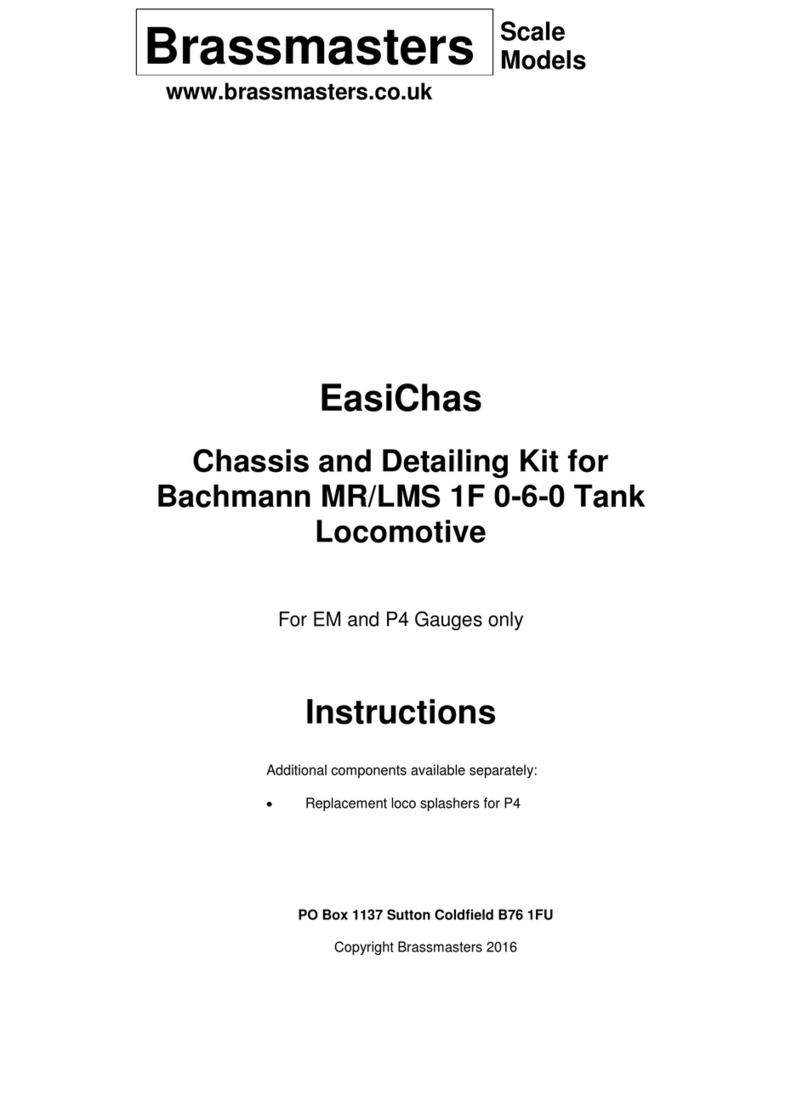
Brassmasters
Brassmasters EasiChas User manual
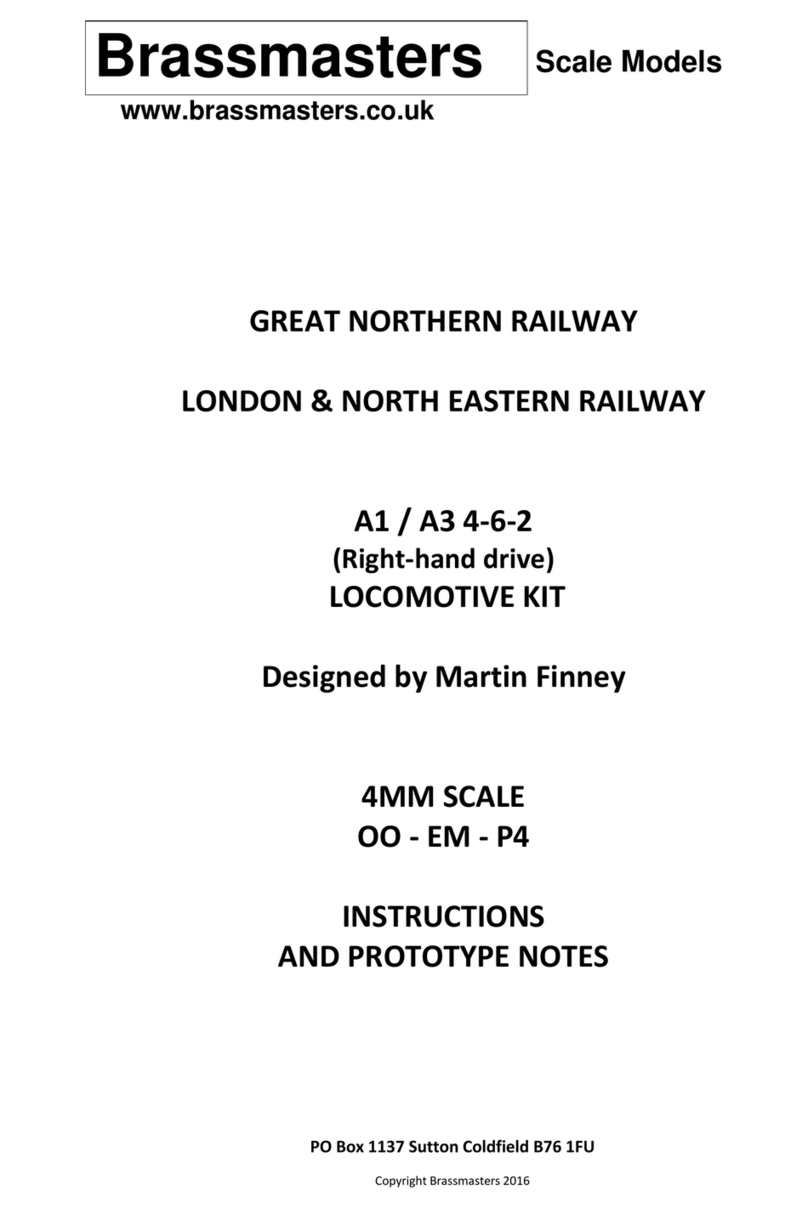
Brassmasters
Brassmasters A1 4-6-2 User manual

Brassmasters
Brassmasters GWR 3000 User manual

Brassmasters
Brassmasters BULLDOG User manual

Brassmasters
Brassmasters EasiChas User manual

Brassmasters
Brassmasters LNER V2 2-6-2 User manual
Popular Toy manuals by other brands

marklin
marklin 39564 instruction manual
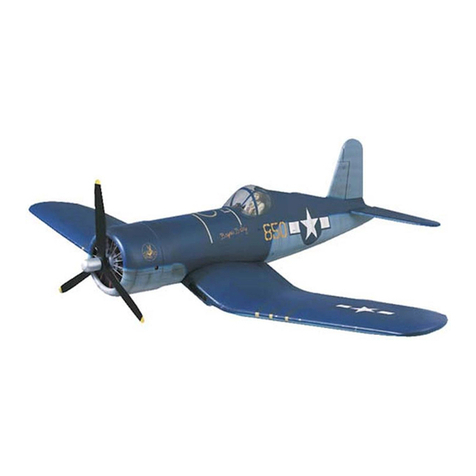
Top Flite
Top Flite Giant F4U Corsair Instruction book

Fisher-Price
Fisher-Price X7635 quick start guide
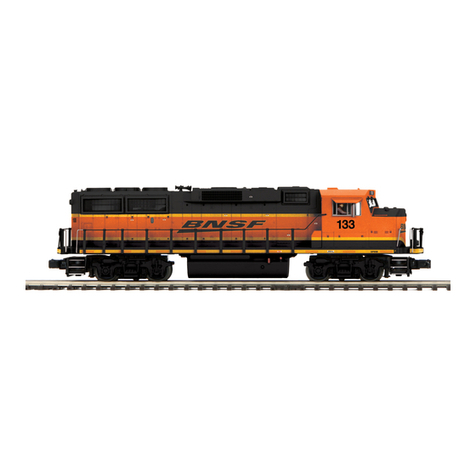
MTHTrains
MTHTrains Premier GP60M Diesel Engine Operator's manual
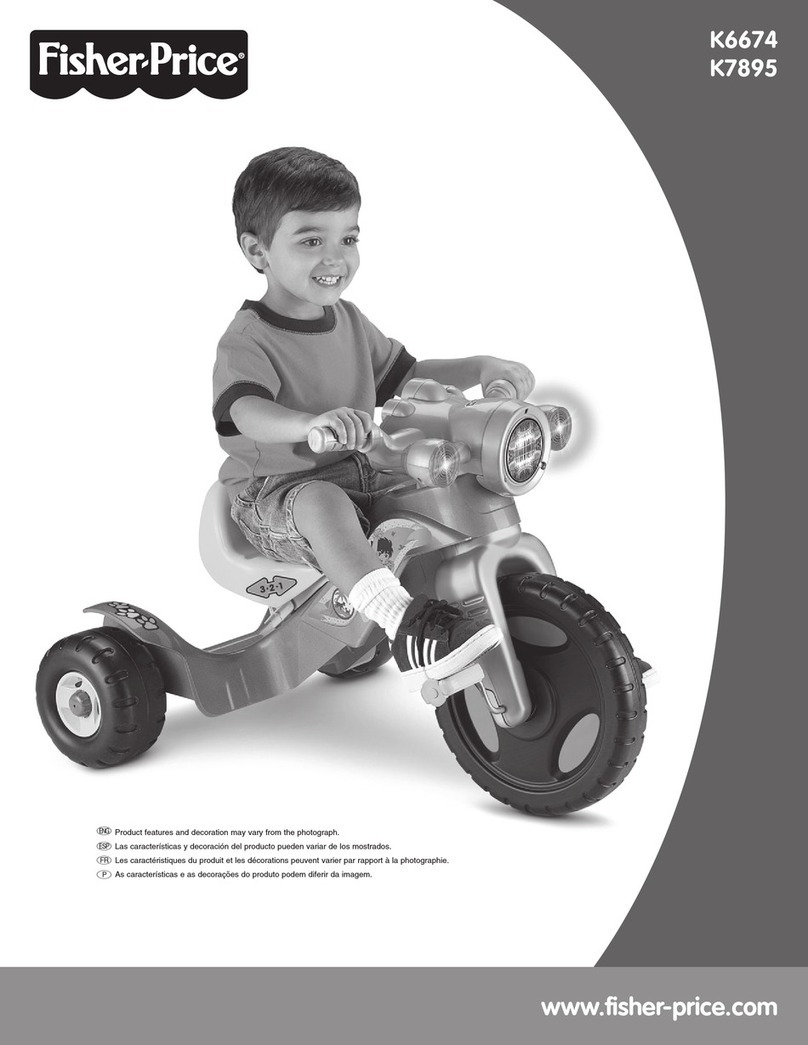
Fisher-Price
Fisher-Price K6674 Consumer information

Vmar
Vmar DEHAVILLAND BEAVER 120 ARF Assembly and operation manual
